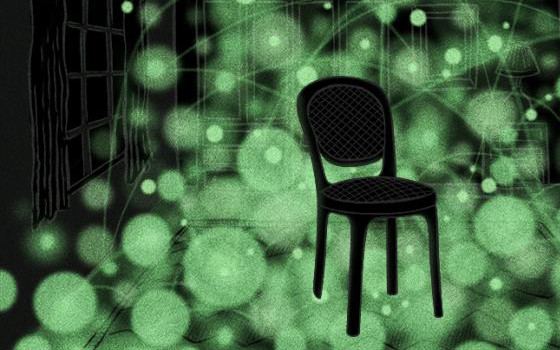The research is described today in the journal Nature Communications.
The scientists, led by physicist Ernst-Ludwig Florin, used their method, called thermal noise imaging, to capture nanometer-scale images of networks of collagen fibrils, which form part of the connective tissue found in the skin of animals. A nanometer is a billionth of a meter or about one-hundred-thousandth of the width of a human hair. Examining collagen fibrils at this scale allowed the scientists to measure for the first time key properties that affect skin’s elasticity, something that could lead to improved designs for artificial skin or tissues.
Taking crisp 3-D images of nanoscale structures in biological samples is extremely difficult, in part because they tend to be soft and bathed in liquid. This means that tiny fluctuations in heat cause structures to move back and forth, an effect known as Brownian motion.
To overcome the blurriness that this creates, other super-resolution imaging techniques often "fix" biological samples by adding chemicals that stiffen various structures, in which case, materials lose their natural mechanical properties. Scientists can sometimes overcome blurriness without fixing the samples if, for example, they focus on rigid structures stuck to a glass surface, but that severely limits the kinds of structures and configurations they can study.
Florin and his team took a different approach. To make an image, they add nanospheres - nanometer-sized beads that reflect laser light - to their biological samples under natural conditions, shine a laser on the sample and compile superfast snapshots of the nanospheres viewed through a light microscope.
The scientists explain that the method, thermal noise imaging, works something like this analogy: Imagine you needed to take a three-dimensional image of a room in total darkness. If you were to throw a glowing rubber ball into the room and use a camera to collect a series of high-speed images of the ball as it bounces around, you would see that as the ball moves around the room, it isn’t able to move through solid objects such as tables and chairs. Combining millions of images taken so fast that they don't blur, you would be able to build a picture of where there are objects (wherever the ball couldn’t go) and where there aren't objects (where it could go).
In thermal noise imaging, the equivalent of the rubber ball is a nanosphere that moves around in a sample by natural Brownian motion - the same unruly force that has bedeviled other microscopy methods.
"This chaotic wiggling is a nuisance for most microscopy techniques because it makes everything blurry," says Florin. "We've turned it to our advantage. We don't need to build a complicated mechanism to move our probe around. We sit back and let nature do it for us."
The original concept for the thermal noise imaging technique was published and patented in 2001, but technical challenges prevented it from being developed into a fully functioning process until now.
The tool allowed the researchers to measure for the first time the mechanical properties of collagen fibrils in a network. Collagen is a biopolymer that forms scaffolds for cells in the skin and contributes to the skin's elasticity. Scientists are still not sure how a collagen network’s architecture results in its elasticity, an important question that must be answered for the rational design of artificial skin.
"If you want to build artificial skin, you have to understand how the natural components work," says Florin. "You could then better design a collagen network that acts as a scaffolding that encourages cells to grow in the right way."
The paper's first author is Tobias Bartsch, a former graduate student at UT Austin and currently a postdoctoral associate at The Rockefeller University. Other co-authors are Martin Kochanczyk, Emanuel Lissek and Janina Lange.
Funding for this research was provided by the National Science Foundation and the Simons Foundation.
